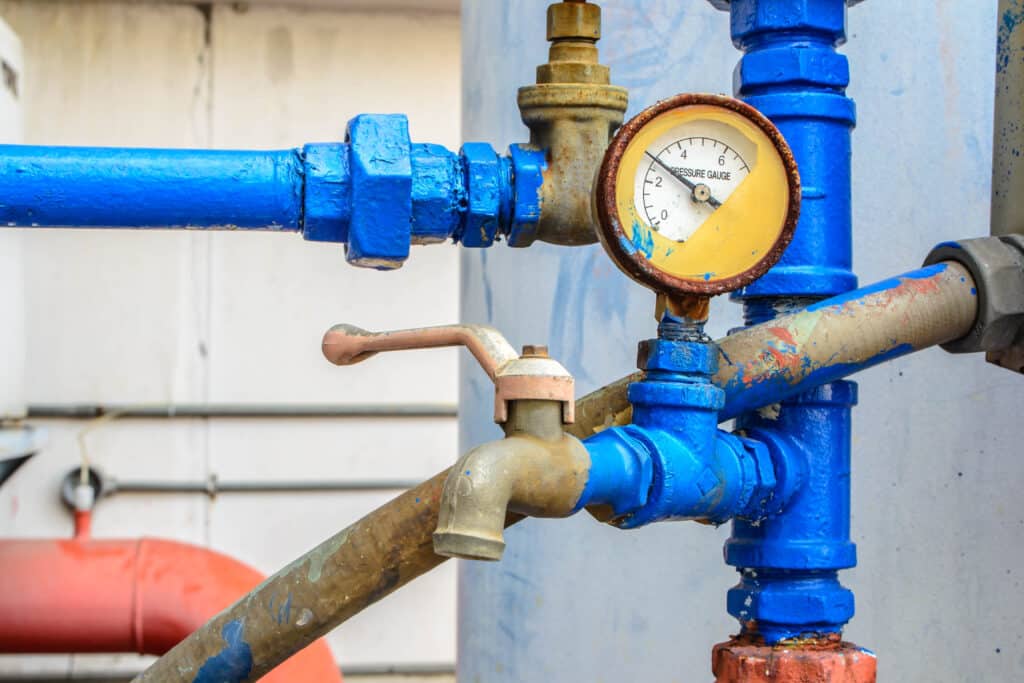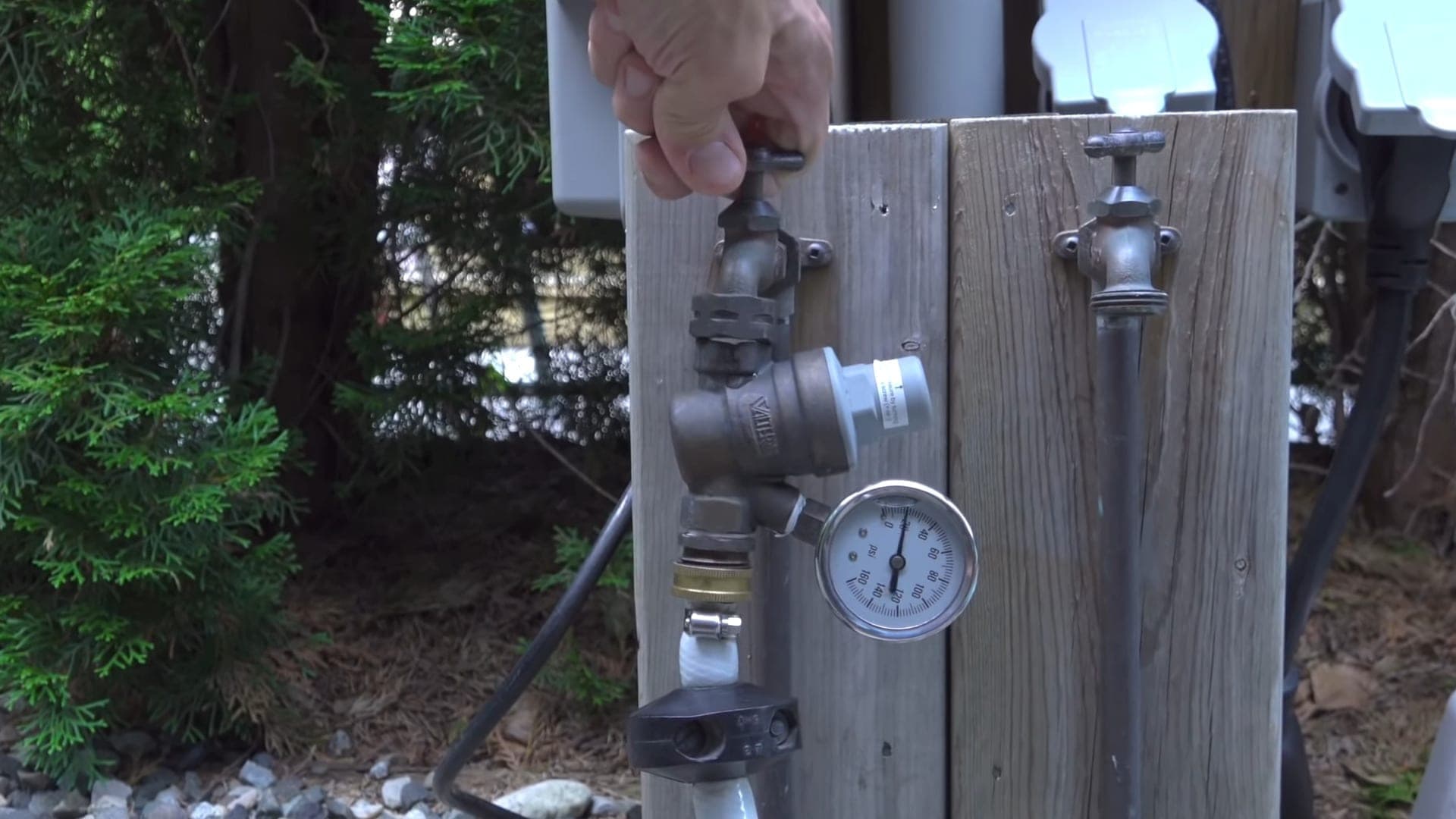Recommended Ways for Fixing Low Water Pressure in Your Home
Recommended Ways for Fixing Low Water Pressure in Your Home
Blog Article
Each person is bound to have their private assumption involving 4 Ways to Troubleshoot Low Water Pressure.

Low water pressure in your home can be a discouraging trouble, affecting every little thing from showering to washing recipes. If you're experiencing weak water flow, there are numerous feasible reasons and solutions to discover. In this guide, we'll review typical reasons for low water pressure and useful actions to address the issue properly.
Intro to Low Water Stress
Low water pressure takes place when the circulation of water from your taps, showers, and other components is weak than normal. This can make daily jobs more tough and less reliable. Comprehending the root causes of low tide pressure is important to finding the ideal service.
Usual Causes of Low Tide Pressure
Pipe Obstructions
In time, pipes can come to be blocked with natural resource, debris, or debris, restricting the circulation of water. This is a typical concern in older homes with galvanized steel pipes.
Rust
Corrosion within pipelines can result in leakages and reduced water pressure. Corrosion build-up can constrict water circulation, particularly in maturing plumbing systems.
Faulty Pressure Regulators
Pressure regulatory authorities are responsible for keeping constant water stress in your house. If they malfunction, it can lead to low tide stress or uneven circulation throughout the house.
Municipal Supply Of Water Issues
In some cases, the issue lies outside your home. Community water concerns, such as main line leakages or upkeep work, can momentarily lower water pressure in your location.
Exactly How to Detect Low Water Stress
Inspecting Faucets and Fixtures
Begin by testing the water pressure at various faucets and fixtures throughout your home. If the concern is separated to specific areas, it may show local troubles.
Evaluating Pipelines
Inspect noticeable pipes for indications of leakages, rust, or obstructions. Focus on any kind of uncommon audios, such as knocking or rattling pipes, which can show concerns within the plumbing system.
Consulting with a Plumber
If you're not able to identify the root cause of low tide stress, take into consideration hiring a professional plumber to carry out a comprehensive evaluation. They can determine underlying issues and advise proper remedies.
Do It Yourself Solutions to Repair Low Tide Pressure
Cleaning Aerators and Showerheads
Natural resources can collect in aerators and showerheads, lowering water flow. Get rid of and cleanse these elements frequently to enhance water pressure.
Flushing Hot Water Heater
Sediment build-up in the hot water heater can restrict circulation and minimize effectiveness. Flushing the storage tank periodically assists remove sediment and maintain ideal performance.
Inspecting Pressure Regulatory Authority
Ensure that the stress regulatory authority is functioning correctly. Readjusting or changing the regulatory authority can help recover correct water pressure throughout your home.
Cleaning Clogs in Piping
For small clogs, attempt making use of a plumbing snake or chemical drainpipe cleaner to clear blockages in pipes. Beware when using chemicals and comply with safety and security standards.
When to Call an Expert Plumber
If DIY efforts fail to resolve the problem or if you believe considerable plumbing problems, it's finest to look for assistance from a qualified plumber. They have the proficiency and tools to attend to intricate concerns safely and efficiently.
Preventive Measures to Maintain Water Stress
Routine Upkeep
Set up routine maintenance for your plumbing system to stop issues such as deterioration, leakages, and obstructions. Dealing with small troubles early can help prevent more substantial repairs later on.
Setting Up a Pressure Booster
Consider mounting a stress booster pump to boost water pressure in areas with constantly reduced flow. This can be especially advantageous for multi-story homes or residential properties with high-demand fixtures.
Surveillance Water Usage
Be mindful of water usage routines and stay clear of overtaxing the plumbing system. Straightforward modifications, such as incredible showers and laundry loads, can aid keep appropriate water pressure.
Verdict
Taking care of low water pressure can be irritating, however determining the underlying reasons and carrying out suitable solutions can bring back ideal circulation throughout your home. Whether it's cleaning aerators, examining pipelines, or talking to a plumber, taking aggressive actions can make certain a constant supply of water for your everyday needs.
FOUR WAYS TO FIX LOW WATER PRESSURE NOW
Turning on a shower or faucet only to find the water comes out in a sad, slow drizzle is never a good feeling. How exactly are you supposed to wash a pan or take a quick shower when it takes 10 minutes just to rinse off a little soap? The good news is that when your water pressure is bad, there's always a cause: typically one that can be easily fixed. Here are some of the most common causes of low pressure and what you can do to fix the issue:
DEBRIS AND MINERAL DEPOSIT BUILDUPS
If you notice low water pressure from just one or two of the fixtures in your house, the problem likely has to do with debris buildup. Water is full of minerals and other debris, all of which can accumulate in your pipes and on your fixtures. This can cause a blockage that affects how much water flows through. To fix this, try filling a small plastic bag with white vinegar, and use a rubber band to hang it around your showerhead or faucet. Let the head of the fixture soak for a few hours, and the vinegar should loosen the deposits.
WATER LEAKS
Leaks are another common cause of low water pressure. If water is flowing out of your plumbing through a hole or crack before it can reach your fixture, the pressure coming out of the faucet or showerhead will be lower. A plumbing professional is your best bet for finding and repairing a leak in your water supply pipes.
Leaks are another common cause of low water pressure. If water is flowing out of your plumbing through a hole or crack before it can reach your fixture, the pressure coming out of the faucet or showerhead will be lower. A plumbing professional is your best bet for finding and repairing a leak in your water supply pipes.
FOUR WAYS TO FIX LOW WATER PRESSURE NOW
Turning on a shower or faucet only to find the water comes out in a sad, slow drizzle is never a good feeling. How exactly are you supposed to wash a pan or take a quick shower when it takes 10 minutes just to rinse off a little soap? The good news is that when your water pressure is bad, there's always a cause: typically one that can be easily fixed. Here are some of the most common causes of low pressure and what you can do to fix the issue:
DEBRIS AND MINERAL DEPOSIT BUILDUPS
If you notice low water pressure from just one or two of the fixtures in your house, the problem likely has to do with debris buildup. Water is full of minerals and other debris, all of which can accumulate in your pipes and on your fixtures. This can cause a blockage that affects how much water flows through. To fix this, try filling a small plastic bag with white vinegar, and use a rubber band to hang it around your showerhead or faucet. Let the head of the fixture soak for a few hours, and the vinegar should loosen the deposits.
WATER LEAKS
Leaks are another common cause of low water pressure. If water is flowing out of your plumbing through a hole or crack before it can reach your fixture, the pressure coming out of the faucet or showerhead will be lower. A plumbing professional is your best bet for finding and repairing a leak in your water supply pipes.
Leaks are another common cause of low water pressure. If water is flowing out of your plumbing through a hole or crack before it can reach your fixture, the pressure coming out of the faucet or showerhead will be lower. A plumbing professional is your best bet for finding and repairing a leak in your water supply pipes.
A VALVE ISSUE
If you have low water pressure throughout your home, check your main shut-off valve to make sure it's completely open. You may also want to see if there's a pressure-reducing valve installed. If there is, have a plumber help you adjust the settings to get the pressure you're looking for.
OTHERS USING WATER
Believe it or not, your low water pressure could be caused by your neighbors. If you notice low pressure at certain times of day, it may be because you and the people living next to you have similar schedules - when everyone is showering at the same time, the pressure will be lower in every home. Low pressure throughout the neighborhood may also be caused by an issue with your municipal water supply. If that's the case, call the supplier to see if they're working on the issue.
https://www.rotorooter.com/blog/water-leaking/low-water-pressure-fixes/

As a devoted reader about 4 Ways to Troubleshoot Low Water Pressure, I think sharing that piece of content was smart. Kindly pause to share this blog entry if you enjoyed it. Kudos for your time. Please come visit our site back soon.
Click Here Report this page